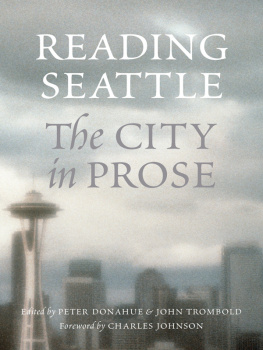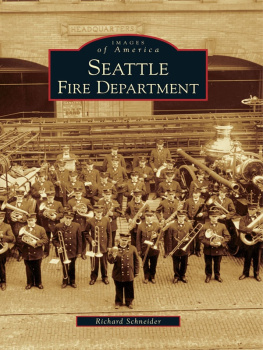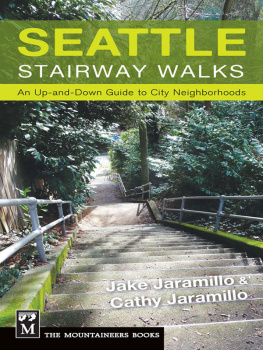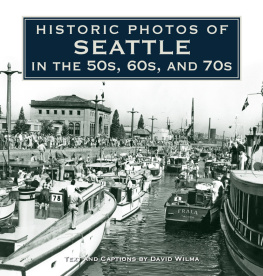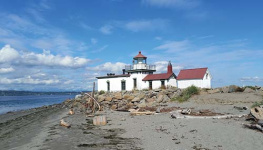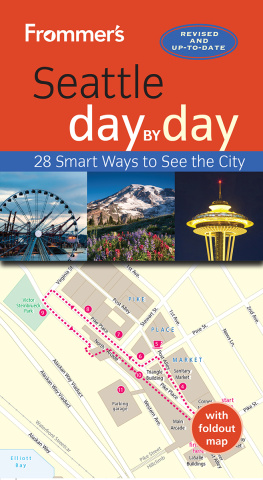All rights reserved. No portion of this publication may be reproduced or transmitted in any form or by any means, electronic or mechanical, including photocopy, recording, or any information storage or retrieval system, without permission in writing from the publisher.
The paper used in this publication is acid-free and recycled from 10 percent post-consumer and at least 50 percent pre-consumer waste. It meets the minimum requirements of American National Standard for Information SciencesPermanence of Paper for Printed Library Materials, ANSI Z39.481984. 
Foreword
CHARLES JOHNSON
IT HAS BEEN MY GREAT PLEASURE and privilege to live in Seattle, this city of neighborhoods, as it has been called, and beneath that looming epiphany of timelessness called Mount Rainier, for twenty-seven years. In other words, for half my life now. Occasionally this city's contemporary genius loci or spirit of place (to borrow a phrase from D. H. Lawrence) has found its way into my short fiction since the 1980stales like China, Menagerie, and Sweet Dreamsbut, like so many Seattle authors who came here from elsewhere, I have set my novels in the regions that had the first, primal influence on shaping my sense of the world: namely, the Midwest of my childhood, places like Chicago, or the little farm towns, champaigns, and hot cornfields of southern Illinois where I first went to college (or an imagined South Carolina delivered to me in family chronicles). So even after nearly thirty years, and despite the fact that this polysemous city, poised at the edge of the nation's western end, renews my spirit like none other, I'm still obliged to work, as a transplant, at deepening my reading of Seattle, not only as a physical location but, even more important, as a landscape rich for the literary imagination.
No prose anthology, in my view, could be more helpfulto immigrants or lifelong residentsin delivering Seattle's relatively recent but startlingly rich history and diverse literary voices than the volume you presently hold in your hands. Its editors, Peter Donahue and John Trombold, have assembled forty-two well-chosen selections that sweep us across more than half a century of Seattle literature, alternating nicely between essays and excerpts from fiction that assay this city's nature. That alone, for readers,is worth the price of admission. Yet Reading Seattle offers something more.
Here, we find often cited, de rigueur essays by white interpreters of the city such as Mary McCarthy, Roger Sale, Murray Morgan, Emmett Watson, and Richard Hugo, but we discover as well those frequently marginalized, often elided racial others who sang the experience of living in this city from perspectives black, Native American, and Asian. Hearing these voices, a reader comes to simultaneously understand what is unique about Seattle, and he sees just how thoroughly American it has been toward people of color, beginning with the red children whose teeming multitudes once filled this vast continent as stars fill the firmament, according to Archie Binns's account of Chief Seattle (Sealth) in Northwest Gateway: The Story of the Port of Seattle. Equally revealing are excerpts from John Okada's powerful classic No-No Boy and Horace R. Cayton's Long Old Road, which freezes the transitional, fluid moment in the city's history when, as Cayton's father says, it changed from being a race-neutral territory boasting that a man was as good as his word to a place where the South has overtaken us, and freedom is only in namenot a fact.Your mother and Ineither of us ever dreamed the insanity of the South could catch up with us out here. Sadly, and soberingly, it was not until the 1950s, as Neil Henry reports in Pearl's Secret: A Black Man's Search for His White Family, that the Emerald City achieved the civility, latitudinarianism, and laid back geist for which it is known today.
Reading Seattle, like a cornucopia, overflows with insights into the city, large and small, quotidian and grand, and the best of these are observations that only Seattle's most talented literary artists could achievefor example, Mary Brinker Post's lovely description of the Old Curiosity Shop on Colman Dock, where showcases contained Alaskan Indian masks carved from driftwood and the Lord's Prayer etched on the head of a pin (How does one do that?); or Jonathan Raban's first impression of the city, which to him looked like a free-hand sketch, from memory, of a sawmill-owner's whirlwind vacation in Rome and Florence.
Lovers of both Seattle and literature will treasure this book for years to come, finding in its pages the feelings some of us have difficulty putting into words. For that, we are indebted to the literary artists representedhere, those like Raban, an immigrant from England, who, I discovered, captures perfectly my own sense of Seattle, twenty-seven years ago and today, when he writes:
It was something in the disposition of the landscape, the shifting lights and colours of the city. Something. It was hard to nail it, but this something was a mysterious gift that Seattle made to every immigrant who cared to see it. Wherever you came from, Seattle was queerly like home.It was an extraordinarily soft and pliant city. If you went to New York, or to Los Angeles, or even to Guntersville [Alabama], you had to fit yourself to a place whose demands were hard and explicit. You had to learn the school rules. Yet people who came to Seattle could somehow recast it in the image of home, arranging the city around themselves like so many pillows on a bed. One day you'd wake up to find things so snug and familiar that you could easily believe that you'd been born here.
For those unable to live in or visit this ever-surprising city, Reading Seattle may just be the next best thing.
Acknowledgments
WE WISH TO THANK THE FOLLOWING people and institutions for their role in making Reading Seattle a reality.
We owe a special debt of gratitude to all the writers and their family members, friends, and representatives who generously granted us permission to include their work.
Thanks also to the Seattle Public Library and the Pacific Northwest Collection at the University of Washington for the access they provided to their materials.
Thanks to Mary Braun at Oregon State University Press for her early belief in the project, and to Roger Sale for his author recommendations and guiding comments on early versions of the manuscript.
Thanks to Val Clark for her wise and generous consultations on publishing and to Marcus Gilmer for his work in tracking down author bios and Wilson Web hits for Seattle.
Thanks to Ruthie Newman for her residential (and moorage) support.

